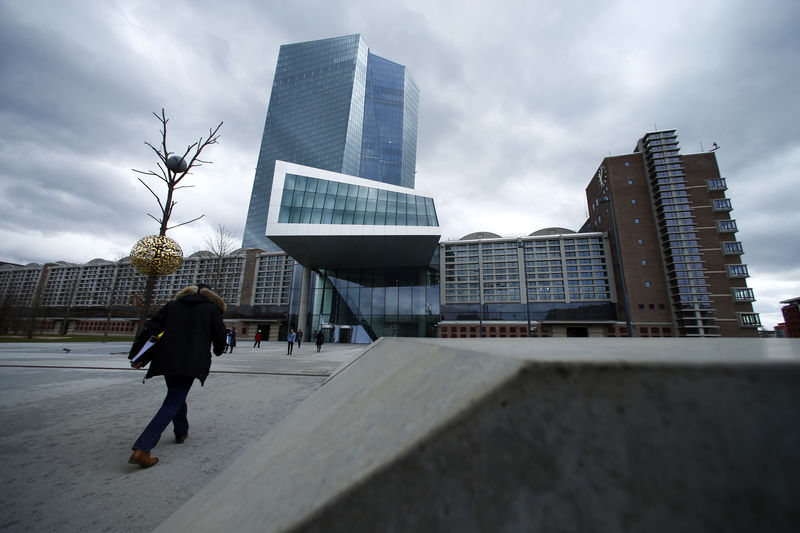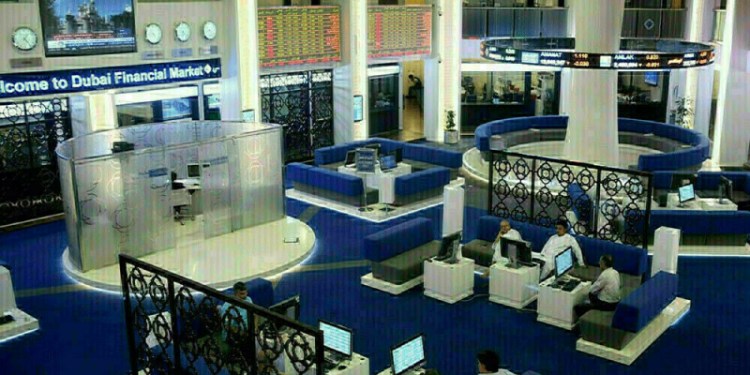 © Reuters. European Central Bank (ECB) headquarters building is seen in Frankfurt
© Reuters. European Central Bank (ECB) headquarters building is seen in FrankfurtBy Francesco Canepa and Frank Siebelt
FRANKFURT (Reuters) – European Central Bank staff offered policymakers meeting this week a scenario where interest rates would be raised in mid-2019 after winding down their bond purchases at the end of this year, three sources told Reuters.
The hypothesis, put forward by the bank’s staff, was met favorably by policymakers from the euro zone’s richer north, the sources on or close to the ECB’s decision-making body said.
Rate setters from the south were more cautious, worried about the effect of higher borrowing costs and a stronger euro for their indebted governments and weaker economies.
Their concerns were heightened by a political impasse following inconclusive elections in Italy, which ECB President Mario Draghi, himself an Italian, said could undermine confidence if it were to last.
“The assumptions … don’t have policy relevance because they are not commitments,” one of the sources said.
“We assumed the market’s expectation for tapering and rate hikes in the baseline scenario to look at what sort of financial conditions that would give us,” the source added.
The scenario put forward by ECB staff envisages the bank’s 2.55 trillion-euro ($3.14 trillion) bond-buying program ending this year after winding down for three months, followed by a rate increase toward the middle of next year.
Those assumptions match market expectations, which policy hawks on the ECB’s Governing Council, who are led by Germany and have long been calling for a tightening of the purse strings, are keen to cement, the sources said.
The hawks won the day on Thursday, when the ECB took a symbolic step toward winding down bond purchases by dropping a pledge to ramp them up if needed.
Draghi said the decision had been taken unanimously, but the sources added policymakers still disagree on a number of points.
These mainly relate to whether inflation, now expected to average 1.4 percent this year and next, was reliably heading for the ECB’s medium-term target of just under 2 percent. That is a precondition for ending the ECB’s quantitative easing, after which rates could be raised.
Policymakers were presented with ECB staff assumptions for a final batch of purchases worth a total 30 billion euros in the last quarter of this year, the sources said.
It’s generally accepted that QE is slowly coming to an end, but the sources agreed a decision on how to change the ECB’s policy message was unlikely to come in April; June or July look more likely.
Meanwhile, hawks are already pushing for defining more clearly how long the ECB would wait before raising rates. Doves are in no hurry to tackle that issue.
The ECB’s current policy message simply says the first rate increase would take place “well past” the end of bond purchases.
Fusion Media or anyone involved with Fusion Media will not accept any liability for loss or damage as a result of reliance on the information including data, quotes, charts and buy/sell signals contained within this website. Please be fully informed regarding the risks and costs associated with trading the financial markets, it is one of the riskiest investment forms possible.
Source: Investing.com



























